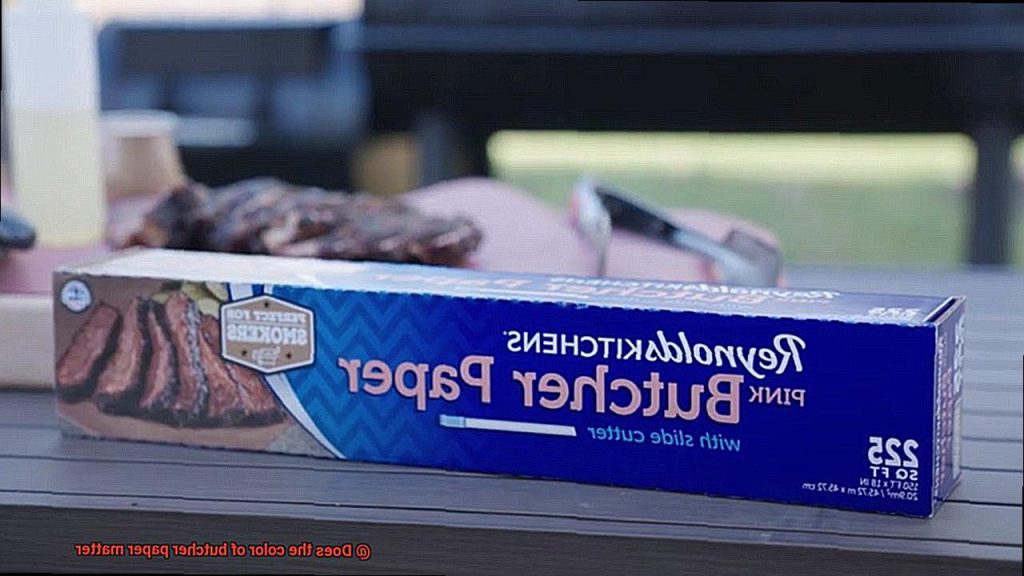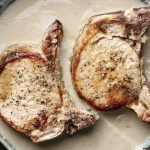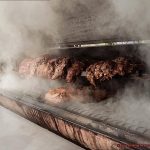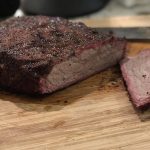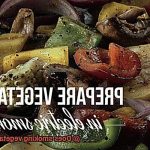Have you ever found yourself standing in front of a stack of butcher paper, agonizing over which color to choose? Maybe you’re getting ready for a big barbecue and want your meat to look its best. Or perhaps you’re just curious about the science behind different colored butcher papers. Whatever your reason for being here, we’ve got you covered. In this blog post, we’ll tackle the age-old question of whether or not the color of butcher paper really makes a difference.
Butcher paper has been used for centuries as a reliable way to wrap meat, fish, and other food items. Traditionally, it’s been available in brown or white, but nowadays you can find it in an array of colors. Some argue that the color doesn’t matter as long as it does its job of protecting the food. Others insist that the color plays a significant role in the overall quality and taste of the meat.
Throughout this post, we’ll explore both sides of this debate. We’ll take a deep dive into why different colors have been used throughout history and what science has to say about it all. We’ll also examine the pros and cons of using different colored butcher papers and how they can impact your cooking experience. So without further ado, let’s get started and find out if the color of butcher paper really matters.
Contents
What is Butcher Paper?
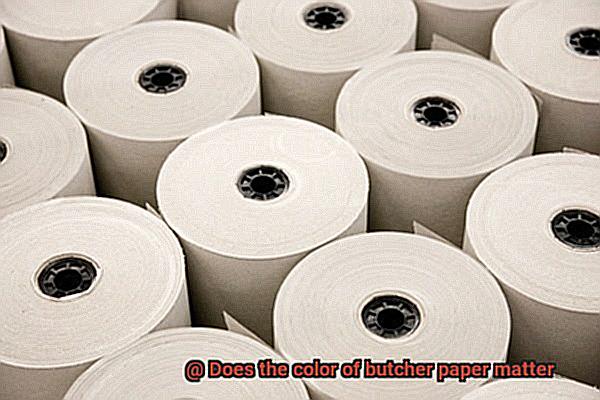
You should definitely have some butcher paper on hand. But what exactly is butcher paper, and why is it so popular in the world of grilling and smoking meats?
Butcher paper is a type of paper that is commonly used in the meatpacking industry. It is made from 100% pure virgin pulp, which makes it strong, durable, and able to withstand wetness and moisture.
Butcher paper comes in various sizes and weights and is usually white or brown in color. Its popularity has grown rapidly in recent years, as people have discovered its ability to help create tender, juicy meat with a great smoky flavor.
Butcher paper is also known as kraft paper, and it has many different uses beyond just meatpacking. In fact, it’s an incredibly versatile material that can be used as a wrapping paper for gifts, as a tablecloth or placemat, or even as a canvas for art projects.
When it comes to grilling and smoking meats, however, butcher paper has become increasingly popular as a way to wrap meats while they cook. The paper helps to trap the moisture and flavor of the meat while also allowing it to breathe. This results in tender, juicy meat that has a great smoky flavor. Plus, it’s much easier to use than other methods like foil and won’t affect the texture or taste of your meat.
Now let’s talk about the age-old question – does the color of butcher paper matter when it comes to grilling and smoking meats? The answer is both yes and no. Both white and brown butcher paper are food-safe and do not contain any harmful chemicals or dyes that could affect the flavor or quality of the meat.
However, there are some subtle differences between the two colors that may affect how you use them. Brown butcher paper is more absorbent than white butcher paper, which means it can help to soak up excess moisture from the meat. This can be helpful if you’re cooking a particularly fatty cut of meat or if you’re trying to create a crispy bark on your barbecue.
On the other hand, white butcher paper is less absorbent than brown butcher paper, which means it may not be as effective at keeping moisture in. This could be a problem if you’re cooking a lean cut of meat that needs to be kept moist during the cooking process.
What Color Options Are Available for Butcher Paper?
As a grillmaster, you know that using butcher paper can be a game-changer for your smoking and grilling needs. But did you know that beyond the traditional natural brown, there are a variety of color options available to suit your needs and aesthetic preferences?
Let’s start with the classic option- natural brown or kraft paper. It’s durable, absorbent, and perfect for wrapping up fatty cuts of meat. But if you want to add some excitement to your presentation, consider some other color options.
One popular choice is pink butcher paper, which is often associated with smoked meats like brisket or ribs. It enhances the appearance of the meat and gives it a pop of color. Blue is another popular option that gives off a cool and refreshing vibe and is great for seafood or other types of meat.
If you’re looking for something more understated, grey and black butcher paper are becoming increasingly popular. These shades add sophistication to your presentation and are perfect for packaging items like sandwiches or cheese.
It’s important to note that while the color of your butcher paper may look cool, it ultimately doesn’t affect the quality or safety of the food being wrapped. So whether you stick with the classic brown or go for something more vibrant, choose a high-quality butcher paper that will keep your meat tender and juicy with that perfect smoky flavor.
In summary, here are some colorful options available for butcher paper:
- Natural brown or kraft paper
- Pink for smoked meats like brisket or ribs
- Blue for seafood or other types of meat
- Grey and black for a sophisticated presentation
Does the Color of Butcher Paper Matter?
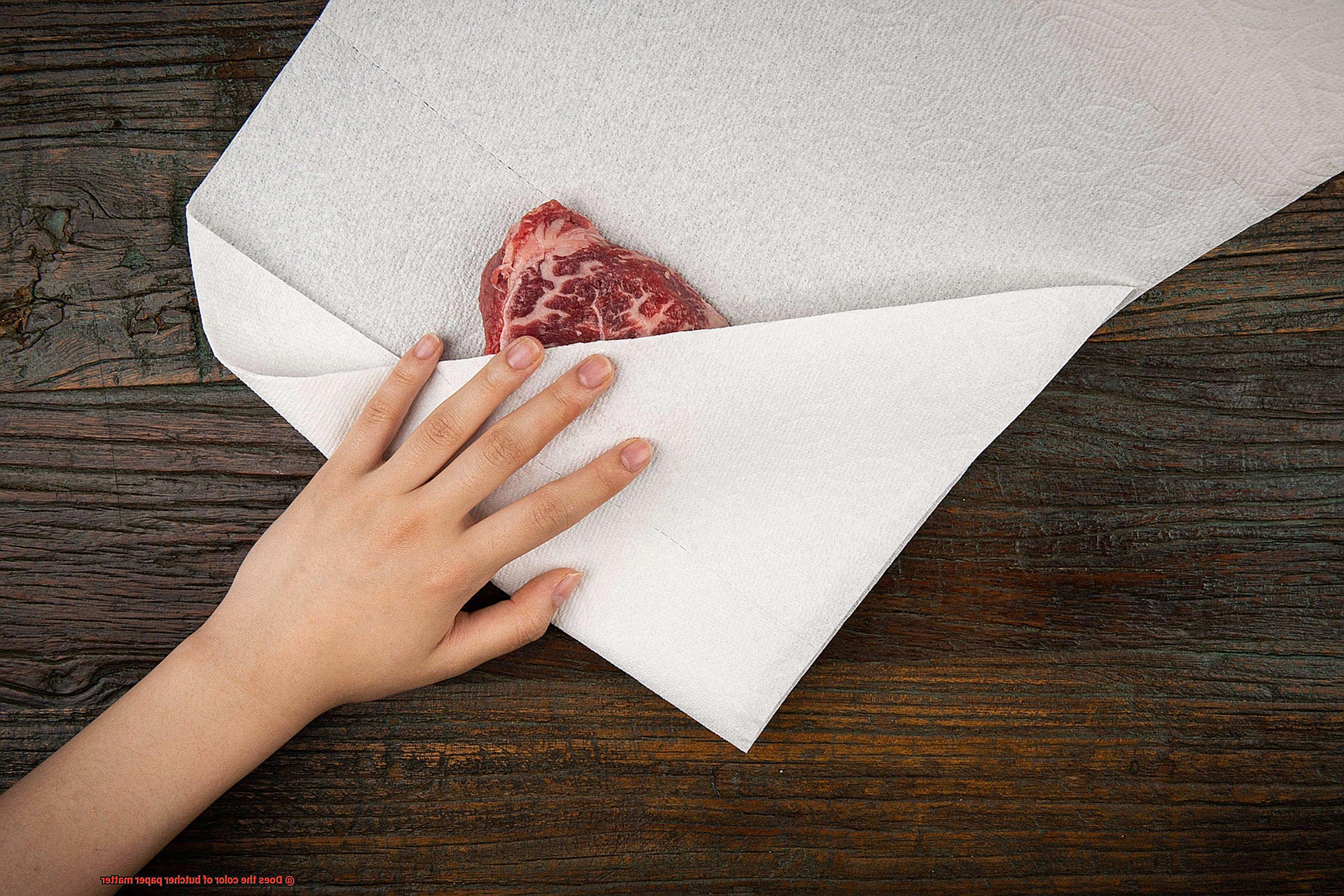
For instance, brown butcher paper is preferred by pitmasters as it gives the meat a rustic, smoky appearance that enhances the overall presentation. In contrast, white butcher paper is more commonly used in commercial kitchens and food service operations because it’s easier to label and organize.
Thickness is another factor to consider. While thicker paper may be more durable and withstand higher temperatures, it may take longer to cook the meat. Conversely, thinner paper may cook faster but can easily tear.
Ultimately, the choice of butcher paper comes down to personal preference and intended use. Whether you choose white or brown butcher paper, ensure it’s food-grade and safe for cooking. However, remember that butcher paper isn’t a substitute for proper cooking techniques and food safety practices.
So go ahead and experiment with different colors of butcher paper to add some excitement to your presentation. But don’t forget that what matters most is how well you cook your meat. Happy grilling.
Benefits of White Butcher Paper
As a grill master or pitmaster, achieving perfect meat can be a daunting task. Luckily, the answer to your problems is simple: white butcher paper. It’s a versatile and affordable tool that offers numerous benefits for cooking and presentation.
Firstly, white butcher paper allows meat to breathe while retaining moisture. This means that you’ll have tender and juicy meat with all the flavors locked in. It’s also an affordable alternative to foil, which can be costly.
But it’s not just about functionality – white butcher paper is also visually appealing. Unlike colored paper that can clash with the colors of your food, white provides a clean and classic look that complements any dish. It’s perfect for creating a neutral backdrop for presentation, so your food can truly shine.
In addition to cooking, white butcher paper has endless uses beyond the kitchen. Use it as a table covering for outdoor events, as a surface for arts and crafts projects, or even for wrapping gifts. Its versatility is unmatched.
Of course, safety is always a top priority when it comes to food preparation. That’s why using food-grade white butcher paper is essential. You want to make sure that the materials you’re using are free from harmful chemicals and won’t compromise the safety of your food.
Benefits of Brown Butcher Paper
This versatile paper is a game-changer in the kitchen, adding both practical and visual appeal to your meals. Let’s explore the numerous benefits of using brown butcher paper.
Firstly, let’s talk about moisture. We all know that cooking meat can be challenging, as it tends to dry out quickly. Brown butcher paper helps to retain moisture during the cooking process, resulting in tender and succulent meat that will have your taste buds dancing with joy.
Secondly, let’s discuss the beautiful bark that brown butcher paper can create on your meat. The natural color of the paper allows smoke to penetrate the meat, creating a flavorful crust on the outside that will make your guests’ mouths water. Not only does this add flavor, but it also looks visually stunning.
Thirdly, brown butcher paper is an excellent way to keep your cooked meat warm and moist until it’s ready to be served. Unlike plastic wrap or aluminum foil, which can make your food sweat and lose its flavor, brown butcher paper keeps your food fresh and delicious. Plus, it looks fantastic on the table, adding a rustic touch that will impress your guests.
Finally, let’s talk about the environmental benefits of using brown butcher paper. Unlike plastic wrap or aluminum foil, which are harmful to the environment and take hundreds of years to decompose, brown butcher paper is biodegradable and can be easily recycled. By using brown butcher paper, you’re not only improving your cooking but also doing your part for the planet.
How to Choose the Right Color of Butcher Paper for Your Needs
When it comes to choosing the perfect color of butcher paper, you might be surprised to know that it can affect more than just the cooking process. In fact, the color of your butcher paper can have a significant impact on the presentation and overall aesthetic of your dish. Here are five things to consider when choosing the right color of butcher paper for your needs.
Brown Butcher Paper: The Classic Choice
Brown butcher paper is a tried-and-true classic that’s perfect for smoking meats. It allows for breathability while still maintaining moisture, making it ideal for longer cooking times. Additionally, brown butcher paper can give off a rustic and natural look that’s perfect for casual BBQs or outdoor events. The best part? Brown butcher paper does not affect the quality or flavor of the meat. Instead, it can actually enhance the flavor by retaining moisture and creating a nice bark on the outside of the meat.
White Butcher Paper: The Clean and Professional Look
If you’re looking for a clean and professional look, white butcher paper is your best bet. This color provides a crisp and polished look that is often used in restaurants or catering events. It’s also ideal for wrapping sandwiches, burgers, and other food items. However, white butcher paper is less absorbent than brown butcher paper, which means it may not be as effective at keeping moisture in. This could be a problem if you’re cooking a lean cut of meat that needs to be kept moist during the cooking process.
Black Butcher Paper: The Dramatic Choice
For a more dramatic and modern look, black butcher paper is a great choice. Like brown butcher paper, it allows for breathability while still maintaining moisture. Black butcher paper can be perfect for upscale events or trendy restaurants looking to make a statement. However, keep in mind that black butcher paper may not be as versatile as brown or white in terms of complementing different types of food.
Colored Butcher Paper: Avoid Harmful Chemicals
While colored butcher papers like pink or red may look appealing, they are not recommended for use with meat. These colors can contain harmful chemicals that may transfer onto the food, potentially causing health issues. Stick with brown, white, or black butcher paper for best results.
Tips for Using Butcher Paper
Butcher paper is a must-have for any serious cook or griller. Its versatility makes it ideal for a wide range of tasks, from wrapping sandwiches to smoking meat. However, using butcher paper for cooking and grilling requires some careful consideration to ensure the best possible results. Here are some tips for selecting and using the right type and color of butcher paper.
Choose the Right Type and Color of Butcher Paper
When shopping for butcher paper, you’ll likely come across two main types: white and brown. White butcher paper is often used in commercial settings for wrapping sandwiches or lining trays or baskets. Brown butcher paper, on the other hand, is great for wrapping meat because it’s more absorbent and helps to create a crispy bark on your barbecue. Additionally, pink butcher paper is preferred by many pitmasters for smoking meats as it retains moisture and keeps the meat tender.
Properly Secure the Butcher Paper in Place
To avoid any leaks or spills during cooking, ensure that the butcher paper is properly secured around the item you’re wrapping. You can use twine or tape to hold the paper in place.
Use High-Quality Butcher Paper
When using butcher paper for cooking or grilling, it’s important to choose a high-quality paper that is strong enough to withstand the cooking process. A lower quality paper may tear or break apart during cooking.
Consider Heat Exposure
Butcher paper isn’t as heat-resistant as other materials like aluminum foil or parchment paper, so it’s essential to be careful with heat exposure when using it for cooking or grilling. Avoid exposing the paper to direct flames or high temperatures for extended periods of time.
Think About Your Meat’s Needs
When choosing between white and brown butcher paper, consider what your meat needs to stay moist and flavorful during cooking. If you’re cooking a lean cut of meat that needs to retain moisture, white butcher paper is the better choice. But if you’re cooking a fatty cut of meat or want to create a crispy bark on your barbecue, brown butcher paper is the way to go.
Conclusion
In summary, the color of butcher paper may seem like a small detail, but it can have an impact on the visual appeal of your dish. However, when it comes to food safety and quality, both white and brown butcher paper are equally safe to use. You don’t have to worry about any harmful chemicals or dyes seeping into your food.
That being said, there are some subtle differences between white and brown butcher paper that you should keep in mind. Brown butcher paper is more absorbent than its white counterpart, making it ideal for barbecuing as it helps create a crispy bark while soaking up excess moisture from the meat. On the other hand, white butcher paper is less absorbent and may not be as effective at trapping in moisture.
When selecting which color of butcher paper to use, consider the overall presentation you’re going for along with what your meat needs to stay juicy and tender during cooking. Whether you opt for brown for a rustic feel or white for a clean look, make sure to choose high-quality food-grade butcher paper that will deliver that perfect smoky flavor.
Although colorful options like pink or blue may look fun and exciting, it’s best to stick with traditional colors like black, white or brown for optimal results.

